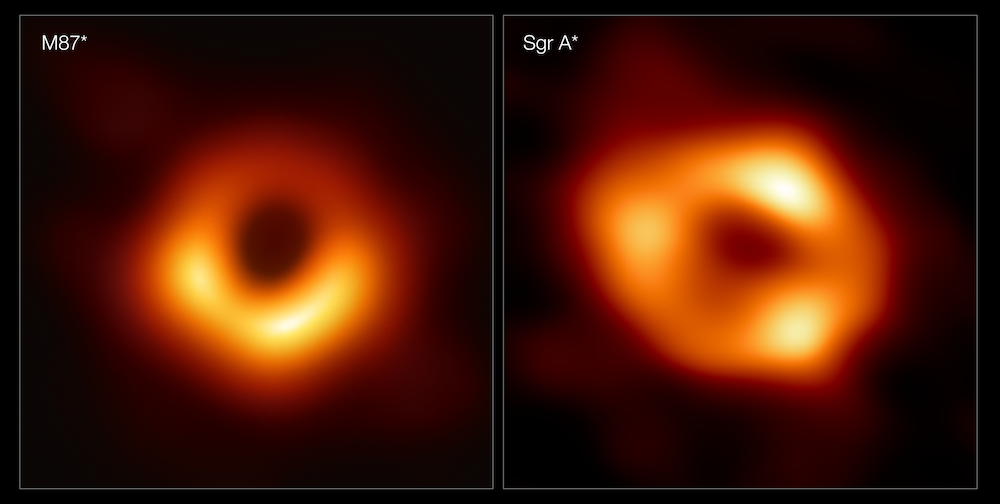
In the EHT image of Sagittarius A*, what are the brighter areas in the accretion disk?
Paul Kerns
Indianapolis, Indiana
Although we’re confident about the size and width of the ring, we think the bright spots could just be artifacts of our very difficult image-reconstruction techniques, combined with challenges in imaging the source.
The main problem is that the plasma around Sagittarius A* (abbreviated Sgr A*) moves around very quickly while we try to take its image. We do expect some blobs due to random fluctuations in the turbulent accretion flow of the plasma around the black hole, but we’re not quite sure that’s what we see in the image.
The other black hole imaged by the Event Horizon Telescope (EHT), M87*, evolves on much longer timescales and is easier to image. We’re confident that the brightness asymmetry in that image is due to a phenomenon called Doppler beaming, whereby material moving toward us near the speed of light becomes brighter. Combined with a known large-scale jet direction, this allowed us to figure out which way M87* is rotating: clockwise from our point of view.
Ongoing improvements to the EHT will allow us to be more confident in these kinds of detailed features in our images of Sgr A*. We’re adding new stations around the world, upgrading the technology at existing sites, and working on our imaging algorithms. Stay tuned!
Angelo Ricarte
Postdoctoral Fellow, Institute for Theory and Computation, Harvard-Smithsonian Center for Astrophysics, Cambridge, Massachusetts









